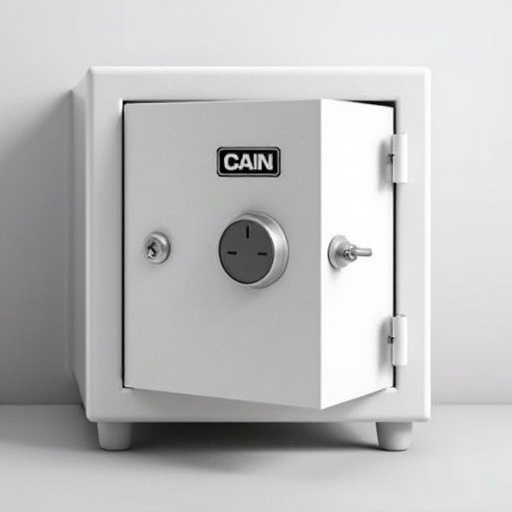In an era focused on security, hollowed-out household items emerge as creative storage solutions for valuable possessions and sensitive information. From books with concealed slots to antique furniture with secret drawers, these items blend functional design with enhanced privacy and protection. Carefully designed with hidden compartments, they offer a unique way to safeguard belongings within seemingly innocuous everyday essentials, integrating security seamlessly into home environments while adding an artistic intrigue. However, this raises ethical concerns about privacy invasion if not managed responsibly, emphasizing the need for secure ownership and discretion.
Uncover the hidden secrets within everyday household items! This article explores the intriguing world of hidden compartments concealed within seemingly ordinary objects. From bookshelves to kitchen cabinets, we delve into the art of hollowed-out household items and their surprising security features. Discover creative uses for these built-in safety compartments, and explore the ethical dimensions of ownership, privacy, and security. Unlocking these secret spaces offers a fascinating blend of functionality and discretion in your daily life.
- Uncovering Hidden Compartments: Common Items with Secret Spaces
- The Appeal of Hollowed-Out Design: Functionality and Discretion
- Creative Uses for Built-In Security Compartments
- Ethical Considerations: Privacy, Security, and Responsible Ownership
Uncovering Hidden Compartments: Common Items with Secret Spaces
In today’s world, where security is paramount, it’s intriguing to explore everyday household items that double as secret safes. Many common objects have hidden compartments, offering a discreet way to store valuable possessions or sensitive information. From books with concealed slots to antique furniture with secret drawers, these items provide innovative solutions for those seeking secure storage options.
By hollowing out or cleverly designing these household essentials, creators offer more than just aesthetic appeal; they provide an additional layer of protection and privacy. Whether it’s a vintage chest of drawers with a hidden compartment built into the back panel or a custom-made bookcase that conceals a safe, these items cater to individuals seeking discrete and secure spaces for their belongings.
The Appeal of Hollowed-Out Design: Functionality and Discretion
The appeal of hollowed-out household items lies in their dual nature—functionality and discretion. These items, carefully designed with hidden compartments, offer a unique blend of practicality and privacy. For example, a book with a secret stash or a vase that doubles as a safe can seem like ordinary objects at first glance, but they provide an extra layer of security for valuable items or sensitive documents.
This clever use of space is particularly attractive to those seeking discreet storage solutions. Hollowed-out items allow users to keep their belongings hidden from prying eyes without sacrificing aesthetics. From antique furniture to modern decorative pieces, these creations blur the line between art and functionality, ensuring that personal items remain secure while adding a touch of mystery and intrigue to one’s living space.
Creative Uses for Built-In Security Compartments
Many everyday household items can double as secret storage spaces, offering a unique twist on built-in security compartments. From bookshelves to old suitcases, these seemingly ordinary objects can be creatively transformed into hidden safes. For instance, an old wooden box, hollowed out and lined with metal, can serve as a discrete vault for valuable items, documents, or even a small emergency kit. Its unassuming appearance allows it to blend seamlessly into any room, while its secure nature provides peace of mind.
Similarly, custom-made furniture with hidden compartments is gaining popularity among those seeking creative solutions for data security and privacy. A cleverly designed desk, for example, could feature a built-in safe within the drawer or a secret panel behind a bookshelf, ensuring sensitive materials are kept out of prying eyes. This clever use of hollowed-out household items offers both functionality and an added layer of protection, making it an innovative approach to security in modern homes.
Ethical Considerations: Privacy, Security, and Responsible Ownership
The concept of hidden compartments in everyday items raises several ethical considerations, particularly regarding privacy and security. As we explore the world of hollowed-out household items for enhanced security, it’s crucial to balance the potential benefits with the risks to personal privacy. Every individual deserves a reasonable expectation of privacy, and creating secret spaces within common objects could potentially invade that right if not managed responsibly.
Moreover, the responsibility of owning such innovative solutions lies heavily on the user. Securely storing sensitive items or documents within these hidden compartments demands caution to prevent unauthorized access. Responsible ownership includes ensuring the integrity of the item, maintaining discretion, and understanding the legal implications of hiding items, especially in areas that could be considered confidential or restricted.
Hidden compartments within hollowed-out household items offer a unique blend of functionality and discretion. These secret spaces cater to various needs, from secure storage to creative expressions. However, as their popularity grows, it’s essential to balance the allure of these hidden compartments with ethical considerations surrounding privacy, security, and responsible ownership. By understanding both the benefits and potential drawbacks, we can enjoy the innovative uses of hollowed-out items while ensuring they remain a safe and positive addition to our homes.
